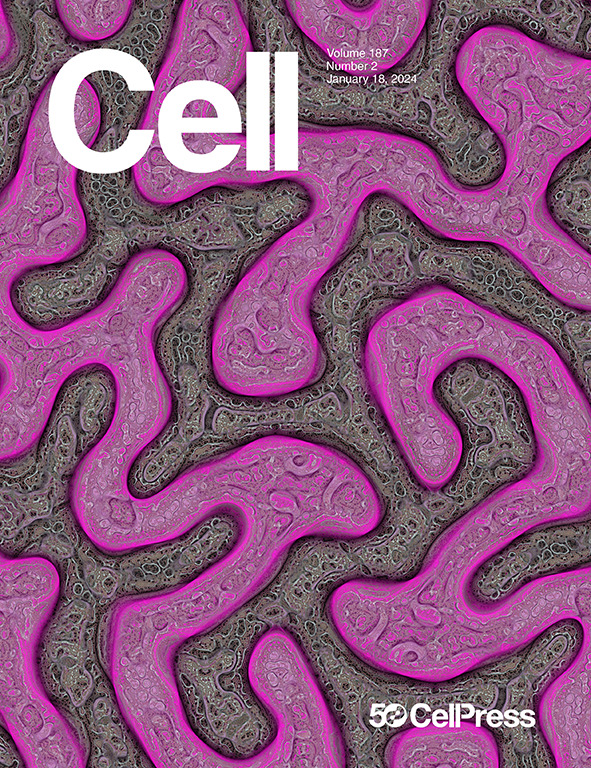Kiwa is a membrane-embedded defense supercomplex activated at phage attachment sites
IF 45.5
1区 生物学
Q1 BIOCHEMISTRY & MOLECULAR BIOLOGY
引用次数: 0
Abstract
Bacteria and archaea deploy diverse antiviral defense systems, many of which remain mechanistically uncharacterized. Here, we characterize Kiwa, a widespread two-component system composed of the transmembrane sensor KwaA and the DNA-binding effector KwaB. Cryogenic electron microscopy (cryo-EM) analysis reveals that KwaA and KwaB assemble into a large, membrane-associated supercomplex. Upon phage binding, KwaA senses infection at the membrane, leading to KwaB binding of ejected phage DNA and inhibition of replication and late transcription, without inducing host cell death. Although KwaB can bind DNA independently, its antiviral activity requires association with KwaA, suggesting spatial or conformational regulation. We show that the phage-encoded DNA-mimic protein Gam directly binds and inhibits KwaB but that co-expression with the Gam-targeted RecBCD system restores protection by Kiwa. Our findings support a model in which Kiwa coordinates membrane-associated detection of phage infection with downstream DNA binding by its effector, forming a spatially coordinated antiviral mechanism.

Kiwa是一种在噬菌体附着位点激活的膜内防御超复合体
细菌和古细菌部署不同的抗病毒防御系统,其中许多仍然没有机械特征。在这里,我们描述了Kiwa,一个广泛的双组分系统,由跨膜传感器KwaA和dna结合效应KwaB组成。低温电子显微镜(cryo-EM)分析显示,KwaA和KwaB组装成一个大的,膜相关的超复合物。在噬菌体结合后,KwaA在膜上感知感染,导致KwaB结合喷出的噬菌体DNA,抑制复制和晚期转录,而不诱导宿主细胞死亡。虽然KwaB可以独立结合DNA,但其抗病毒活性需要与KwaA结合,提示存在空间或构象调控。我们发现噬菌体编码的dna模拟蛋白Gam直接结合并抑制KwaB,但与Gam靶向的RecBCD系统共表达可以恢复Kiwa的保护作用。我们的研究结果支持Kiwa协调噬菌体感染的膜相关检测与下游DNA的效应结合的模型,形成一个空间协调的抗病毒机制。
本文章由计算机程序翻译,如有差异,请以英文原文为准。
求助全文
约1分钟内获得全文
求助全文
来源期刊

Cell
生物-生化与分子生物学
CiteScore
110.00
自引率
0.80%
发文量
396
审稿时长
2 months
期刊介绍:
Cells is an international, peer-reviewed, open access journal that focuses on cell biology, molecular biology, and biophysics. It is affiliated with several societies, including the Spanish Society for Biochemistry and Molecular Biology (SEBBM), Nordic Autophagy Society (NAS), Spanish Society of Hematology and Hemotherapy (SEHH), and Society for Regenerative Medicine (Russian Federation) (RPO).
The journal publishes research findings of significant importance in various areas of experimental biology, such as cell biology, molecular biology, neuroscience, immunology, virology, microbiology, cancer, human genetics, systems biology, signaling, and disease mechanisms and therapeutics. The primary criterion for considering papers is whether the results contribute to significant conceptual advances or raise thought-provoking questions and hypotheses related to interesting and important biological inquiries.
In addition to primary research articles presented in four formats, Cells also features review and opinion articles in its "leading edge" section, discussing recent research advancements and topics of interest to its wide readership.
 求助内容:
求助内容: 应助结果提醒方式:
应助结果提醒方式:


